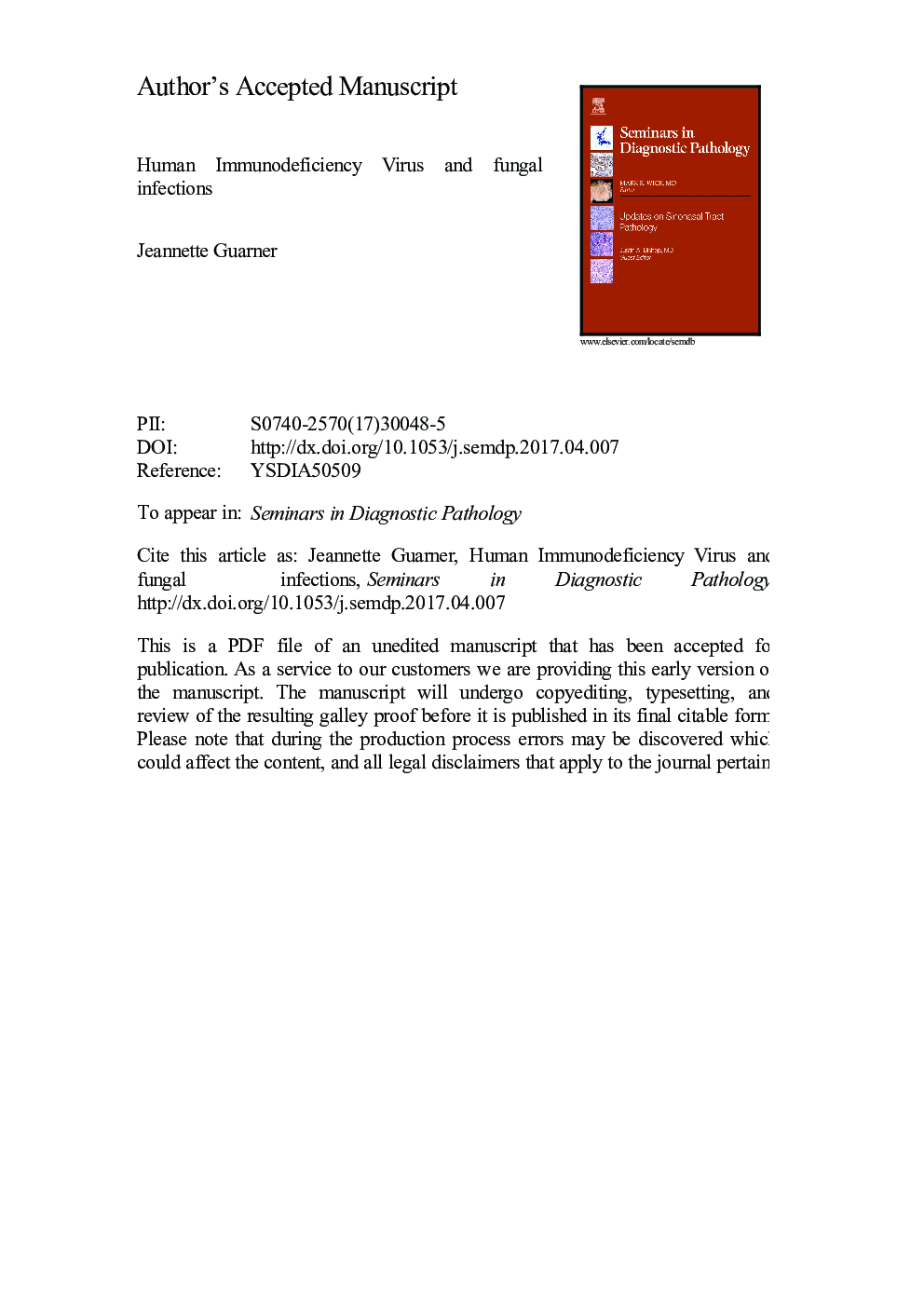| Article ID | Journal | Published Year | Pages | File Type |
|---|---|---|---|---|
| 5716672 | Seminars in Diagnostic Pathology | 2017 | 26 Pages |
Abstract
The discovery of HIV was largely due to the presence of Pneumocystis pneumonia (PCP) in young patients that did not have the usual known causes of immune deficiencies in the early 1980s. Currently, treatment with highly active anti-retroviral therapy (HAART) and the use of prophylaxis for PCP have lowered the frequency of fungal infections; however, these infections continue to cause morbidity and mortality in those patients that fall out or are not in care. The frequency of specific fungal diseases in HIV patients will depend on the prevalence of fungi in the particular geographic location. Nowadays, superficial and invasive Candida infections, PCP, and cryptococci are the most frequent fungal infections seen in HIV positive patients worldwide. The role of pathology in diagnosing fungal infections is crucial because a lesion may be biopsied without obtaining mycology cultures, certain organisms may take several weeks to grow, or the sample sent to the mycology laboratory may not have the organism. Following we will describe fungal infections that are particularly frequent in HIV infected patients and their key pathological features.
Related Topics
Health Sciences
Medicine and Dentistry
Pathology and Medical Technology
Authors
Jeannette Guarner,
